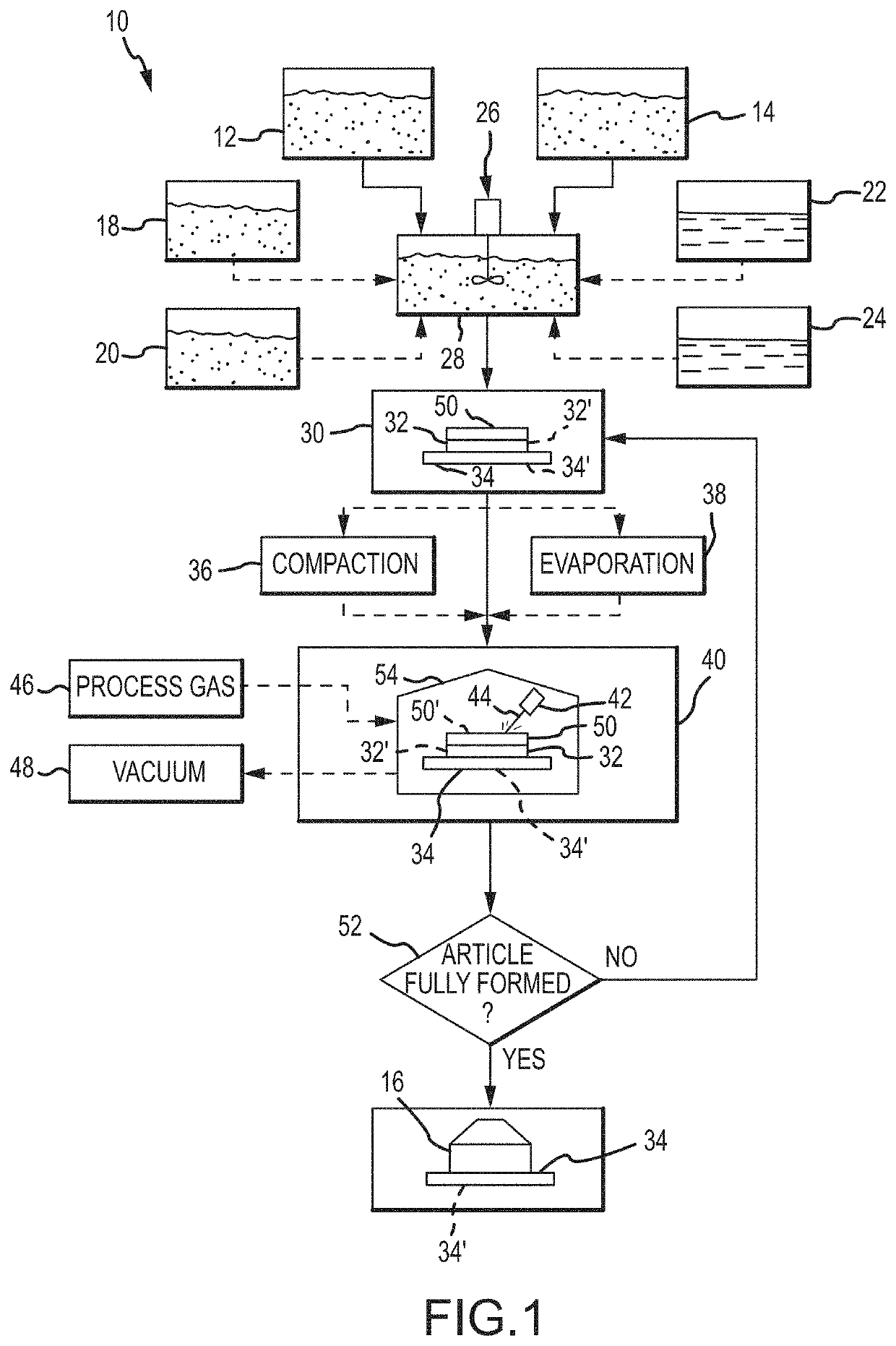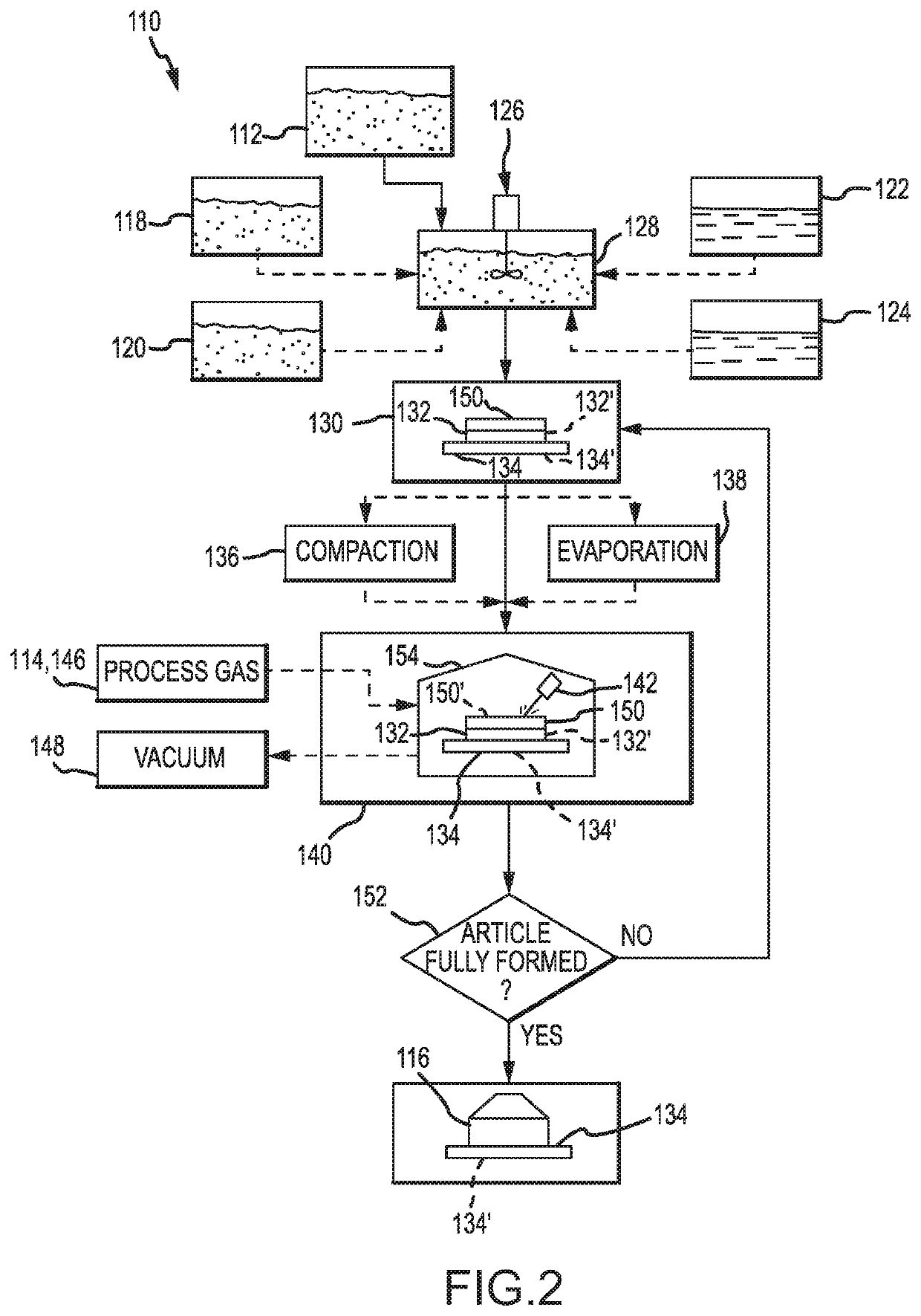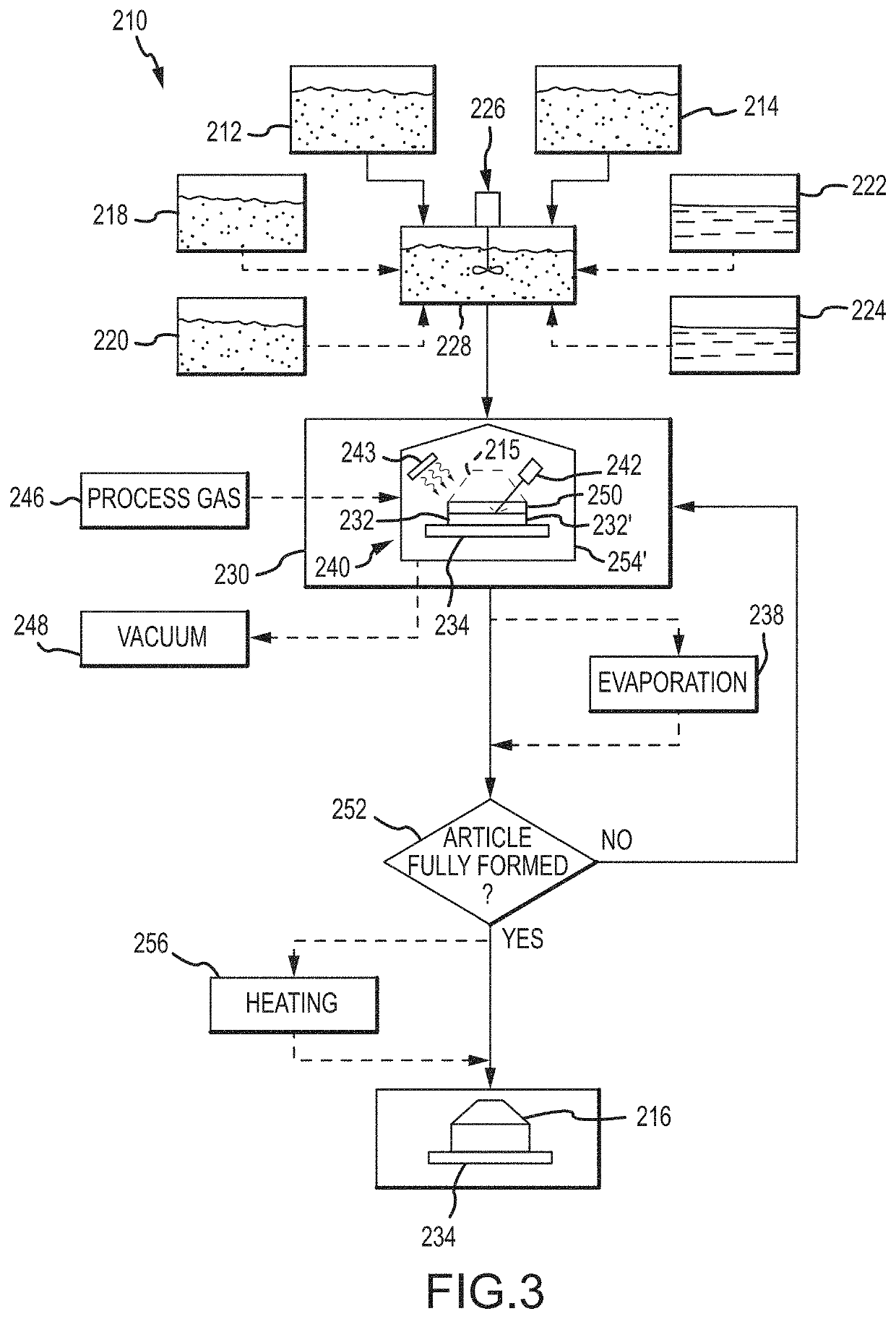Reactive additive manufacturing
a technology of additive manufacturing and manufacturing process, applied in the field of additive manufacturing general, can solve the problems of limiting such processes, restricting production speed, and increasing the cost of equipment needed to produce objects, and achieves high energy input, high quality parts, and high strength.
- Summary
- Abstract
- Description
- Claims
- Application Information
AI Technical Summary
Benefits of technology
Problems solved by technology
Method used
Image
Examples
example 3
[0085]An exothermically reactive mixture containing by weight 55.5% nickel and 44.5% titanium was designed to produce a product comprised of intermetallic nickel-titanium shape memory alloy. The mixture has a calculated adiabatic reaction temperature of 1438 Kelvin. A mixture with a total weight of 2500 g. was prepared by weighing the constituent powders according to the percentages above. The powders were mixed using a motorized tumbler. The mixed powders were then placed in the dispenser tray of the EOS M290 direct metal laser sintering (DMLS) machine.
[0086]Three dimensional models of articles for manufacture were designed using a computer aided design (CAD) software program and digitally sliced into layers corresponding to the thickness of one layer of powder that will be spread. The digital information was sent to the EOS M290 DMLS machine.
[0087]The processing chamber of the DMLS machine was flooded with argon gas and a layer of the powder mixture having a thickness of about 40 ...
example 4
[0089]An exothermically reactive mixture containing by weight 55.12% titanium, 13.83% carbon, and 31.06% aluminum was designed to produce a product with an aluminum matrix comprising by volume 45% and titanium carbide particles comprising by volume 55%. The mixture has a calculated adiabatic reaction temperature of 2368 Kelvin. A mixture with a total weight of 200 g. was prepared by weighing the constituent powders according to the percentages above. The powders were hand shaken in a Nalgene style bottle and poured into a glass beaker where 80 g. of propylene glycol was subsequently added. The powders were mixed with the liquid propylene glycol by hand stirring using a stainless steel stirring utensil. The mixed powders and propylene glycol slurry were then placed in a flexible polymer bag with a nozzle attachment suitable for extrusion of the material by application of pressure on the bag containing the material.
[0090]Three steel sheet metal build plates were placed onto the surfac...
example 5
[0092]An exothermically reactive mixture containing by weight 70.0% silicon and 30.0% carbon was designed to produce a product comprised of silicon carbide. The mixture has a calculated adiabatic reaction temperature of 1852 Kelvin. A mixture with a total weight of 10 g. was prepared by weighing the constituent powders according to the percentages above. The powders were mixed by shaking followed by hand milling with a mortar and pestle.
[0093]An Epilog Zing laser engraver with a 40 Watt carbon dioxide laser was modified to include a steel die having a cylindrical bore of about 25.4 mm (about 1 inch) with the die height positioned by the adjustable height positioning table while the cylindrical press rod passed through a hole in the positioning table to sit flat on the machine base at a fixed height. The Epilog Zing laser engraver was placed inside a controlled atmosphere glove box and the glove box was flooded with argon gas. The positioning table height was adjusted so that there w...
PUM
| Property | Measurement | Unit |
|---|---|---|
| diameter | aaaaa | aaaaa |
| particle sizes | aaaaa | aaaaa |
| temperature | aaaaa | aaaaa |
Abstract
Description
Claims
Application Information
 Login to View More
Login to View More - R&D
- Intellectual Property
- Life Sciences
- Materials
- Tech Scout
- Unparalleled Data Quality
- Higher Quality Content
- 60% Fewer Hallucinations
Browse by: Latest US Patents, China's latest patents, Technical Efficacy Thesaurus, Application Domain, Technology Topic, Popular Technical Reports.
© 2025 PatSnap. All rights reserved.Legal|Privacy policy|Modern Slavery Act Transparency Statement|Sitemap|About US| Contact US: help@patsnap.com



